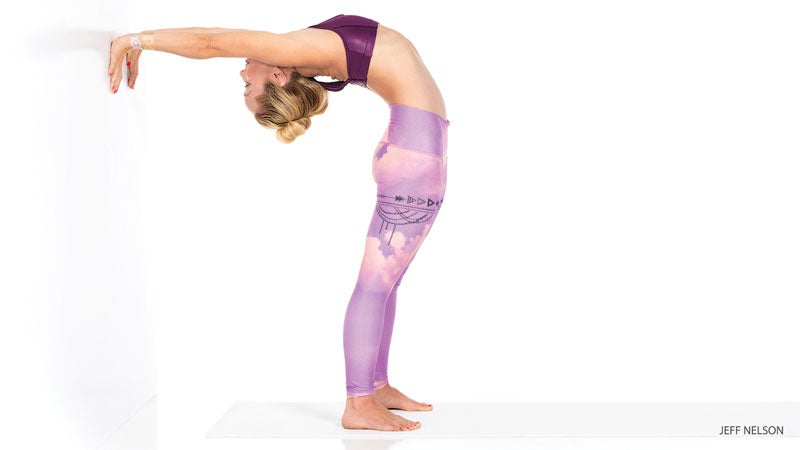Ask the Expert: How Can I Protect Myself in Backbends?


My lower back often hurts after big backbends. How can I protect myself?
When a specific body region consistently experiences pain in asana practice, it’s possible that area is being asked to do too much range of motion or too much work, or both. During backbends, you may be pushing yourself to move too far in space, as opposed to making all the little articulations available in your spine. Experiment with letting your lower spine be the last part of your spine to move into a big backbend, which may help redistribute the stresses of the movement. Use your breath to explore both the depth and width of your rib cage. This will help you find the stiffer places in your thoracic region that may not be fully participating in the extension. Also, although inhaling lifts and opens the rib cage, it puts the thoracic spine into flexion (forward bending). For many people, exhaling into a deep backbend provides significant relief from lower-spine strain.
See also Pain-Free Backbend: Prop Up Kapotasana
If one of your “big backbends” is Wheel Pose, pay attention to your legs. When entering Wheel Pose from supine, focus on pulling with the legs rather than pushing. If your legs push (weight toward your toes rather than your heels), Wheel Pose will not only overtax your arms, but will also tend to compress the lower spine—and pulling does the opposite.
All that said, everyone experiences postures differently, and chronic pain should be taken seriously, so consult a health care practitioner if discomfort persists.